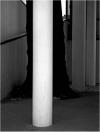Abstract
An issue that has received little treatment in the studies devoted to the only built work of Le Corbusier built in Latin America,maison Curutchet in La Plata, Argentina (1948-1953), is the role of the tree contained in that building. This essay aims toshow that the management given by Le Corbusier to that issue is not accidental and that the relationship between the tree,the project and the built work has precedents in some works of this architect that date back to the 1920s. To demonstrate thisfact it appeals to the compositional analysis of the project and the work, reading of the treatment of the topic in the previousinvestigations and the review of several publications on the mentioned house.Apuntes is registered under a Creative Commons Attribution 4.0 International Public License. Thus, this work may be reproduced, distributed, and publicly shared in digital format, as long as the names of the authors and Pontificia Universidad Javeriana are acknowledged. Others are allowed to quote, adapt, transform, auto-archive, republish, and create based on this material, for any purpose (even commercial ones), provided the authorship is duly acknowledged, a link to the original work is provided, and it is specified if changes have been made. Pontificia Universidad Javeriana does not hold the rights of published works and the authors are solely responsible for the contents of their works; they keep the moral, intellectual, privacy, and publicity rights.
Approving the intervention of the work (review, copy-editing, translation, layout) and the following outreach, are granted through an use license and not through an assignment of rights. This means the journal and Pontificia Universidad Javeriana cannot be held responsible for any ethical malpractice by the authors. As a consequence of the protection granted by the use license, the journal is not required to publish recantations or modify information already published, unless the errata stems from the editorial management process. Publishing contents in this journal does not generate royalties for contributors.


